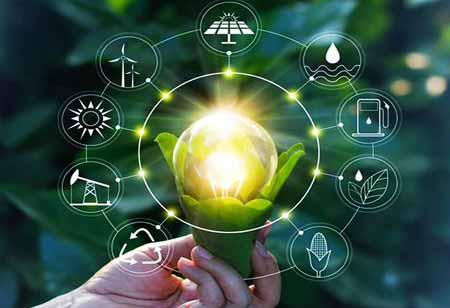Thank you for Subscribing to Electrical Business Review Weekly Brief
I agree We use cookies on this website to enhance your user experience. By clicking any link on this page you are giving your consent for us to set cookies. More info
Powering Resilience: Distributed Energy Resources Usher in a New Era of Grid Stability
In the ever-evolving energy production and consumption landscape, distributed energy resources (DERs) have emerged as game-changers, redefining the concept of grid resilience and local energy generation.

By
Electrical Business Review | Tuesday, January 21, 2025
Stay ahead of the industry with exclusive feature stories on the top companies, expert insights and the latest news delivered straight to your inbox. Subscribe today.
These resources are forging a more resilient and sustainable energy future, from microgrids to rooftop solar panels and small-scale wind turbines.
FREMONT, CA: In the ever-evolving energy production and consumption landscape, distributed energy resources (DERs) have emerged as game-changers, redefining the concept of grid resilience and local energy generation.
Microgrids: Empowering Local Energy Autonomy
Microgrids, self-contained energy systems operating independently or in conjunction with the main grid, have proven invaluable in enhancing grid resilience. These small-scale networks have generation sources, storage solutions, and advanced control systems. During grid outages or emergencies, microgrids can "island" themselves, continuing to supply power to critical facilities such as hospitals, emergency shelters, and communication centers.
In regions prone to natural disasters, microgrids have demonstrated their ability to provide uninterrupted power supply, ensuring the continuity of essential services. Furthermore, integrating renewable sources within microgrids reduces reliance on fossil fuels and enhances the overall sustainability of energy distribution.
Rooftop Solar: Harnessing Sunshine Locally
Rooftop solar panels represent a significant advancement in decentralised energy generation. By converting sunlight into electricity at the point of consumption, rooftop solar reduces the strain on the central grid and minimises transmission losses. This distributed approach enhances energy efficiency and contributes to local energy independence.
Beyond individual homes, communities and commercial buildings increasingly adopt rooftop solar to supplement their energy needs. Excess energy generated during sunny periods can be fed back into the grid, creating a two-way flow of electricity and contributing to grid stability.
Small-Scale Wind Turbines: Tapping Into Local Winds
Small-scale wind turbines have also entered the distributed energy landscape, particularly in areas with favourable wind conditions. These turbines, often installed on rooftops or in small open spaces, can produce electricity to meet local demands. Their compact size and ability to generate power even at lower wind speeds make them ideal for urban and suburban settings.
Local wind energy production reduces the need for long-distance energy transmission and contributes to load balancing on the grid. Combined with other DERs, small-scale wind turbines play a role in decentralising energy production and fostering sustainability.
Challenges and Integration Efforts
While the benefits of distributed energy resources are evident, their integration into existing energy infrastructures presents challenges. Regulatory frameworks, technical standards, and grid compatibility must be addressed to ensure seamless integration and maximise the potential of DERs. Additionally, coordination between various stakeholders, including utilities, policymakers, and technology providers, is essential to achieve a harmonious energy transition.
A Future Powered by Resilience
As the world grapples with climate change and energy security concerns, distributed energy resources offer a pathway to a more resilient and sustainable energy future. By decentralising energy production, harnessing local resources, and minimising the impact of grid disruptions, microgrids, rooftop solar, and small-scale wind turbines empower communities, enhance energy independence, and drive innovation in the power sector. This paradigm shift towards a distributed energy landscape reflects a collective commitment to building a resilient and reliable energy infrastructure that can weather the challenges of the 21st century.








